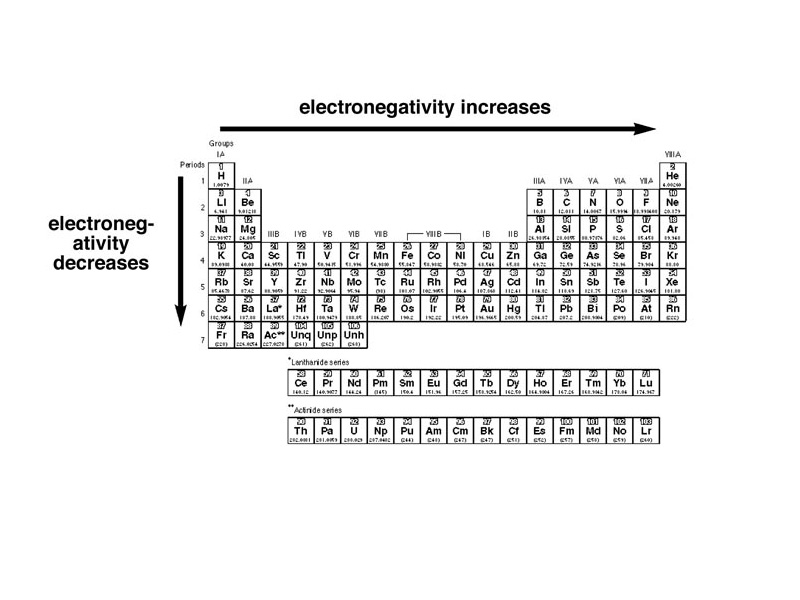Interdisciplinary Note (4 of 22)
Electronegativity reflects the strength of attraction that an atom has for the electrons it shares with other atoms in chemical bonds. Atoms with strong nuclei that bind electrons tightly have high electronegativity values. Because knowing these will help you understand their behavior, memorize the values of the electronegativity of the common atoms of organic chemistry- carbon (2.5), hydrogen (2.1), oxygen (3.5), nitrogen (3.0), fluorine (4.0), chlorine (3.0), bromine (2.8), sulfur (2.6), phosphorus (2.1). Internalize these values so that they are always present to mind and many aspects of the chemical behavior in organic chemistry and biochemistry will be more coherent.
